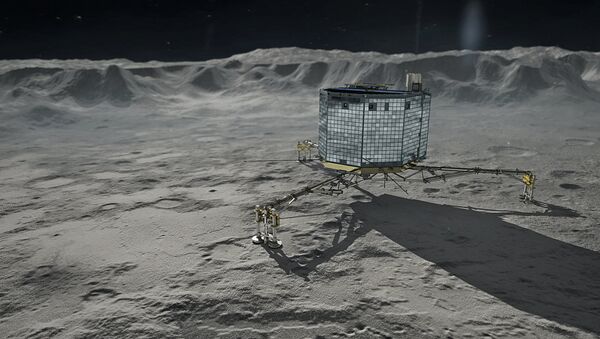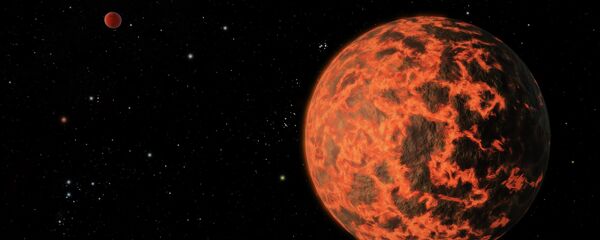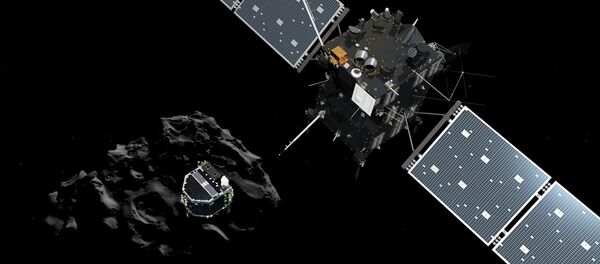At 02:03 GMT on August 13 the comet and its companion, the Rosetta mission's Philae lander, will reach the closest point of its 6.5 year orbit.
"The activity of the comet will likely increase slightly in the days after perihelion," according to observations of previous perihelion passages of 67P and many other comets, explains Ekkehard Kuehrt, a researcher at the German Aerospace Center.
"We are now excited to see how it will evolve in the coming days and weeks. The activity will depend mainly on where the active areas are with respect to the comet's seasonal cycle."
The Rosetta probe, observing the comet from 186 kilometers away, witnessed the greatest activity yet on July 29, when its instruments recorded a stream of gas erupting from the comet's nucleus, which even pushed away the solar wind magnetic field from around the nucleus.
"This is the brightest jet we’ve seen so far," said Carsten Güttler, a member of Rosetta's OSIRIS team at the Max Planck Institute for Solar System Research in Göttingen, Germany.
"Usually, the jets are quite faint compared to the nucleus and we need to stretch the contrast of the images to make them visible – but this one is brighter than the nucleus."
#67P #perihelion2015 fireworks have begun! Outburst on 29 July even pushed away solar wind! http://t.co/U0pJtcS3HW pic.twitter.com/OINRZUxomy
— ESA Rosetta Mission (@ESA_Rosetta) 11 августа 2015
Rosetta arrived at Comet 67P in August 2014 at a distance of about 100 km and eventually orbited the comet at 10 km or less, providing very high-resolution images and information about the shape, density, temperature, and chemical composition of the comet. The Rosetta mission hopes that Comet 67P can provide a key to deciphering the origins of the solar system, and even life on Earth.
How arriving at #67P looked a year ago! http://t.co/sqll2ZpEgz #OTD #ThrowbackThursday #LivingWithAComet pic.twitter.com/bDRS5DUopQ
— ESA Rosetta Mission (@ESA_Rosetta) 6 августа 2015
Rosetta has experienced difficulties in communicating with the Philae lander, which was last in contact on July 9; the team's scientists have moved Rosetta closer to the comet in an attempt to make communication easier for Philea, which has suffered from communications problems in the past, notably when it touched down on the comet in November 2014.
Despite the bumpy landing, Philae was then able to use its ten instruments to conduct on-the-spot analysis of the comet’s surface and subsurface material, and also monitor how the comet changes during the day-night cycle, and while it approaches the Sun.



